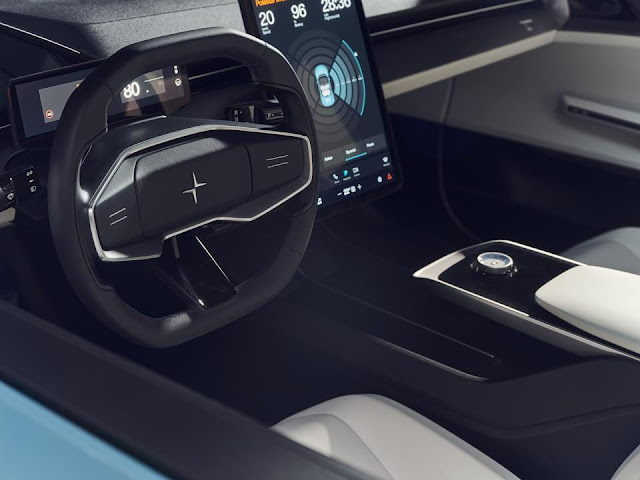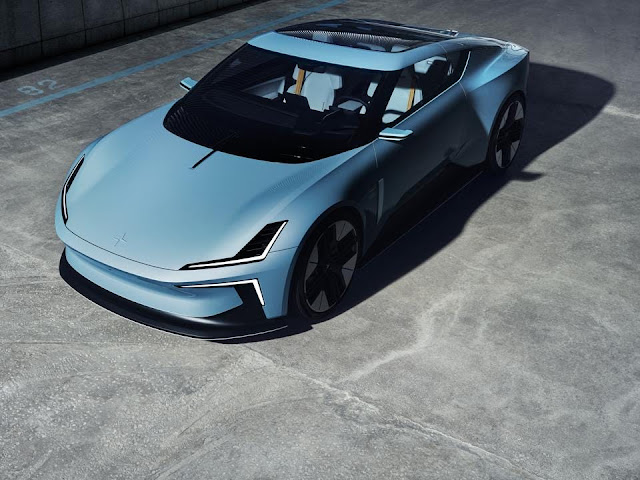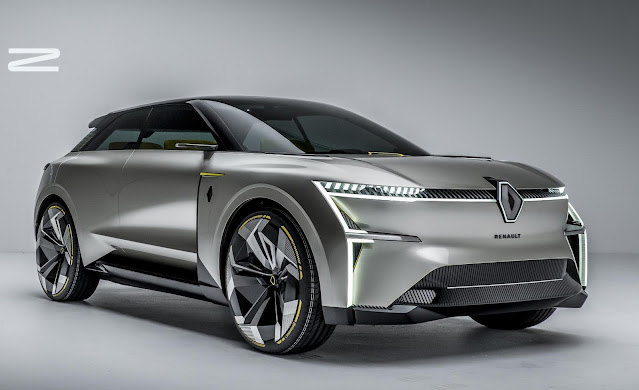Polestar O₂
The redefinition of a sports car
The thrill of electric performance. A bonded aluminum unibody. A mono-material interior. And a drone. All encased in progressive Polestar design. Polestar O₂ is an electric roadster concept that reclassifies the sports car. No roof, no noise, no fumes.
The Tesla Roadster competitor, the Polestar O2, is just a concept. However, Polestar CEO Thomas gave some clues about the car.
Taking design inspiration from the Precept concept car, the O2 is the smallest and sportiest Polestar to date and represents a new hero car for the brand.
The sharply designed 2+2 roadster, which also features a retractable hardtop, has a focus on driver enjoyment, although Polestar hasn’t revealed any performance statistics for the concept vehicle.
It makes sense for Polestar to emphasize how the O2 – or rather, the production car it will morph into – aims to offer a dynamic and rewarding driving experience.
New Polestar O2 concept design
The new Polestar O2 concept carries a lot of its design over from the Precept concept from a couple of years ago, and this is no bad thing.
The front end has a similar, sharp LED light design with no grille cluttering things up. This minimalist theme carries on over the whole car.
A full-width light bar and very slim LED taillights dominate the rear end. There’s also a metal folding hardtop that gives it a more coupe-like side profile.
Polestar O₂ concept envisions new
age for electric roadsters
The second concept car from Polestar builds on the Precept design language
The bespoke aluminum platform showcases quality and rigidity
Sustainability and technology ambitions take the next steps toward greater circularity with recycled polyester thermoplastic mono-material and aluminum labelling
Autonomous cinematic drone mixes innovation with fun.
The interior of the Polestar O2 seems to have been lifted from the previous Precept concept. This means a fairly minimalist design with a huge screen in the middle of the dashboard, similar to the one you get in a new Polestar 2. A ‘Cinematic drone’ also features behind the rear seats, which can be deployed on the move. They designed this to allow you to take photos and videos for social media.
The O2 is also an opportunity to showcase Polestar’s environmental bona fide. They make the interior from a new thermoplastic mono-material, which describes the use of a single base material to manufacture different components. In this case, recycled polyester is used as the sole material for all the soft interior components, such as seat foam, adhesive, 3D knit fibers and non-woven lamination. Polestar says this simplifies recycling and represents a step towards “greater circularity,” while also reducing weight and waste.
“That is an idea that we definitely would love to put in production,” Inshorte said of the use of a mono-material in the interior. “That’s how we use these concept cars really, to put out that ambition and inject the energy into the organization to really strive for making it possible.”
And they designed the chassis of the vehicle in a way to make recycling more seamless. Different grades of aluminum are labeled, allowing them to be recycled more effectively and for their properties to be retained.
 |
WE HAVEN’T SEEN AN ELECTRIC TWO-SEATER SPORTS CAR INTRODUCED SINCE THE TESLA ROADSTER
New Polestar O2 concept price and release date
The Polestar O2 is just a concept for now, so there’s no word as to when it will go on sale. The Polestar 5 is set to be released in 2024, so this convertible could follow soon after. As for price, it’s hard to tell right now how much it will cost. Expect it to be close to £100,000 though.
The most distinctive feature in the Polestar O2 is the inclusion of a “cinematic drone” so owners can film themselves as they drive along a twisty mountain road, for example. It’s designed to be deployed while the car is moving, to record driving sequences.
The perception of European sports car ownership, driving along that twisty mountain road, can be “very old fashioned” and out of touch with today’s concept of shared experiences.
CEO Said the technology that would integrate a drone into the vehicle is “very feasible,” with the drone following the car at speeds of up to 100 km/hour. After filming, the drone can autonomously return to the car. And video clips can be edited and shared directly from the 15-inch center display when the car is parked. Described it as less distracting to the driver than attempting to film yourself with your smartphone.
Inside, Polestar is debuting what it calls “a new thermoplastic mono-material,” which is used extensively throughout the interior.












Comments
Post a Comment